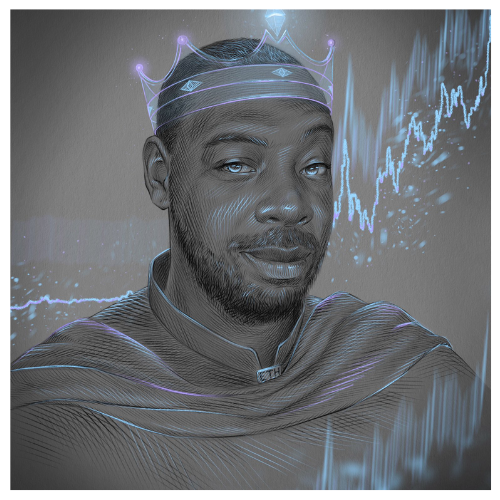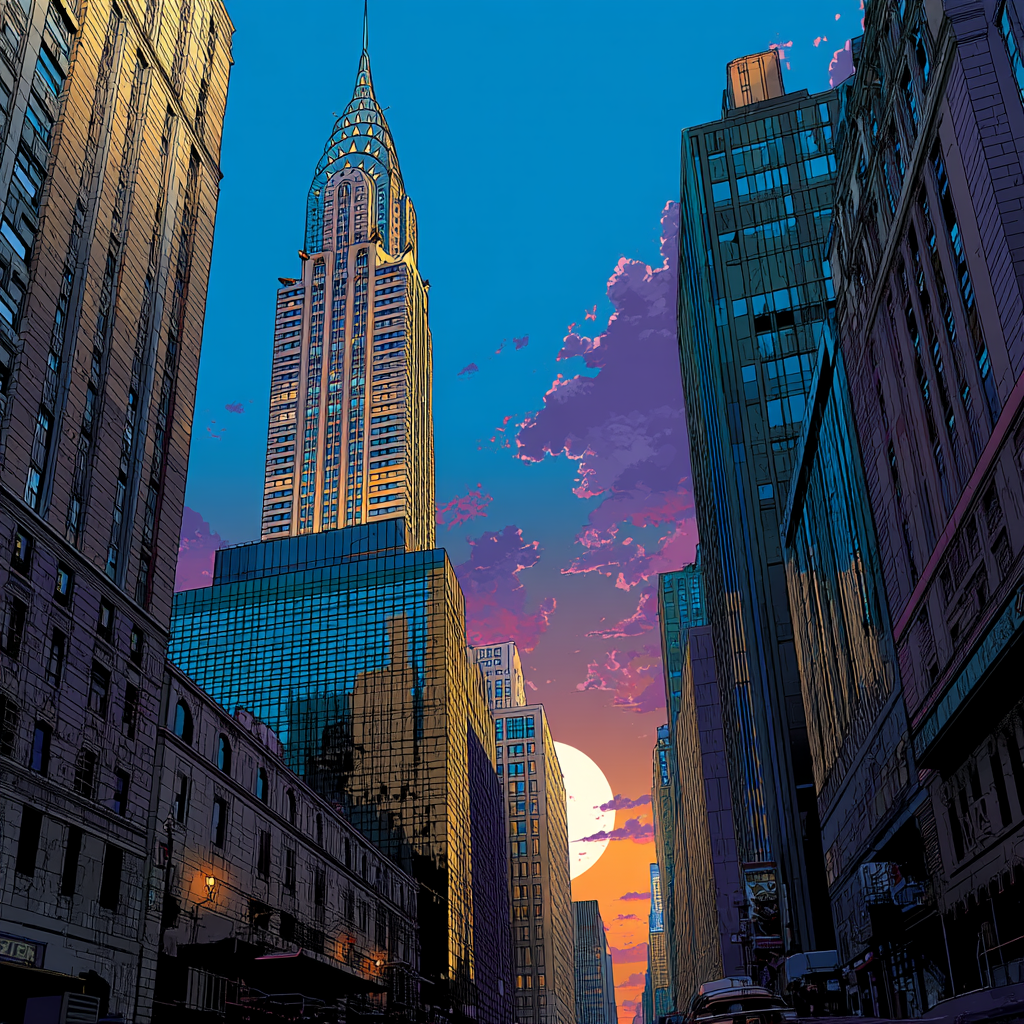The Golden Pulse of Elegance: Art Deco and the Artists Who Defined It
Greetings Warriors!
There are movements in art that whisper, and then there are those that roar. Art Deco didn't just enter the room—it glided in, draped in gold and chrome, with jazz on the wind and modernism in its bones. It wasn't born out of rebellion or minimalism. No, Art Deco was the celebration after the storm, the swagger in civilization's step after the horrors of war. And it remains, to this day, a symbol of ambition, elegance, and the future that never stopped dreaming.
Tamara De Lempicka, Tamara in a Green Bugatti - 1929
BUY MY ART🖤
The Birth of a Bold New Aesthetic
The Art Deco movement began in the early 20th century, flourishing between the 1920s and 1930s. It took its name from the 1925 Paris exhibition, Exposition Internationale des Arts Décoratifs et Industriels Modernes. This world fair was a showcase of cutting-edge architecture, fashion, visual arts, and design. The art world took one long look and said, "Yes. This is the future."
Unlike the flowing, floral, and highly romantic style of Art Nouveau, its immediate predecessor, Art Deco was streamlined, geometric, modern. It fused machine-age aesthetics with handcrafted luxury. Think sunbursts, zigzags, and chevrons. Think chrome, glass, lacquer, and exotic materials like ivory and jade. Think the Chrysler Building in New York, or the interior of a 1930s ocean liner. Art Deco was unapologetically glamorous—a visual anthem of progress and power.
René Lalique, Victoire - 1928
The Historical Spark Behind the Shine
After the devastations of World War I, the world was craving joy, confidence, and celebration. The war had broken the old order. The modern world was being rebuilt, and with it came the Roaring Twenties. Jazz was king, flappers ruled the dance floors, and electricity transformed daily life.
Art Deco emerged not as an escape but as a reimagining of what civilization could look like when it finally began to believe in itself again. It was architecture's clean lines, fashion's embellished silhouettes, and visual art's bold abstraction all rolled into one moment of international style. This wasn’t just France’s movement—it belonged to the world.
Romain de Tirtoff, Harper’s Bazaar February Cover - 1921
The Cultural Climate: Modernity, Machines, and Momentum
Art Deco was born in a world obsessed with speed, industry, and reinvention. The machine age had arrived, and it inspired artists and architects to reflect the era's energy through bold, futuristic designs. Cars, radios, airplanes, and elevators weren’t just marvels—they were muses. This was a time when technology was celebrated, and Art Deco translated that excitement into every artistic medium imaginable.
Even advertising shifted to reflect the Deco aesthetic. Posters, magazine covers, and travel brochures all bore the sleek, symmetrical hallmarks of the style. Every line and curve spoke of motion, ambition, and forward momentum.
BUY MY ART🖤
Georges Lepape, L’Entracte -1912.
A Global Language of Design
Art Deco quickly transcended borders. In America, it manifested in skyscrapers, jazz clubs, and Hollywood film sets. In Cuba, you see it in the bold pastel facades of Havana. In India, the movement fused with Mughal influences. From Shanghai to Johannesburg, Art Deco left fingerprints of progress across continents.
It wasn't merely an art movement. It was a design revolution, shaping everything from buildings to furniture, jewelry to locomotives, posters to perfume bottles. Everything was touched by this new geometric elegance.
And at its heart was a shared belief: Modernity could be beautiful.
Aleksandra Ekster , Theatrical Composition - 1925
Women of Deco: Aleksandra Ekster and the Fusion of Spirit & Structure
One of the most visionary voices in the Art Deco movement was the Ukrainian-born painter and stage designer Aleksandra Ekster. Her works were explosions of color, geometry, and emotion. A celebrated avant-garde artist, Ekster wove elements of Cubism, Futurism, and traditional Ukrainian folk art into a visual language that was distinctly her own.
She wasn’t just painting shapes. She was painting energy.
Ekster was deeply involved in theater and costume design, and her creations for ballets and plays became living embodiments of the Art Deco spirit—dynamic, daring, and elegantly futuristic. She bridged folk traditions with modernist ideals, reminding us that innovation often lives at the crossroads of identity and ambition.
To explore more about her life and contribution to Art Deco, check out the feature I wrote here: 👉 Aleksandra Ekster: The Painted Architect of the Spirit World
Cassandre, Normandie -1935
The Artists, Architects & Visionaries
Art Deco was never a one-man show. It was a global chorus of creatives who didn’t just push boundaries—they redrew them.
Tamara de Lempicka: The queen of Art Deco portraiture. Her stylized, sensual paintings of aristocrats, socialites, and self-possessed women embodied the confidence of the era.
René Lalique: Master of glass and jewelry. His vases, lamps, and perfume bottles shimmered with a sensual clarity that defined the Art Deco decorative arts.
Erté (Romain de Tirtoff): A fashion illustrator whose work shaped the visual identity of fashion and theater with elongated, flowing figures wrapped in glamor.
William Van Alen: Architect of the Chrysler Building, perhaps the most iconic Art Deco skyscraper in the world.
Clarice Cliff: An English ceramic artist whose bold patterns and color palettes brought Art Deco into the homes of everyday people.
These were artists who made no apologies. Their work shimmered with confidence, precision, and a belief that art and design could elevate everyday life.
Erté, Symphony In Black - 1967
The Decline and the Quiet Revival
By the time World War II broke out, the world was no longer in the mood for glittering optimism. The economy collapsed. The art world shifted toward minimalism, abstraction, and conceptualism. Art Deco faded into the shadows, dismissed as too ornamental, too bourgeois.
But as history does, it circled back.
In the late 1960s and 70s, Art Deco saw a revival, especially in graphic design and architecture. Miami Beach's Art Deco Historic District brought renewed attention. Fashion designers rediscovered Deco patterns. Hollywood resurrected its aesthetic for films like The Great Gatsby. Today, the movement is more than nostalgia—it's a statement of elegance in an era of chaos.
Art Deco, once cast aside, is now revered as a testament to beauty in the machine age.
Renaissance Man - Inspired by Leonardo Da Vinci
Art Deco Today: A Warrior's Inspiration
Why does Art Deco still matter? Because it reminds us of the strength it takes to dream big in the aftermath of devastation. Because it shows us how elegance can exist in motion. Because it dares us to design a better world with boldness, clarity, and flair.
For me, Art Deco isn’t just a style. It’s a philosophy of resilience. It's about shaping the future with pride in your past. It’s about building beauty from chaos.
In the gold lines and sunburst patterns, I see hope. In the curves of a Deco tower or the costume sketches of Aleksandra Ekster, I see the warrior’s belief that creation is resistance. That style can be substance. That even in the darkest times, we can dare to shine.
So here's to Art Deco—the heartbeat of a golden era and a torch passed on to the warriors of today.

















